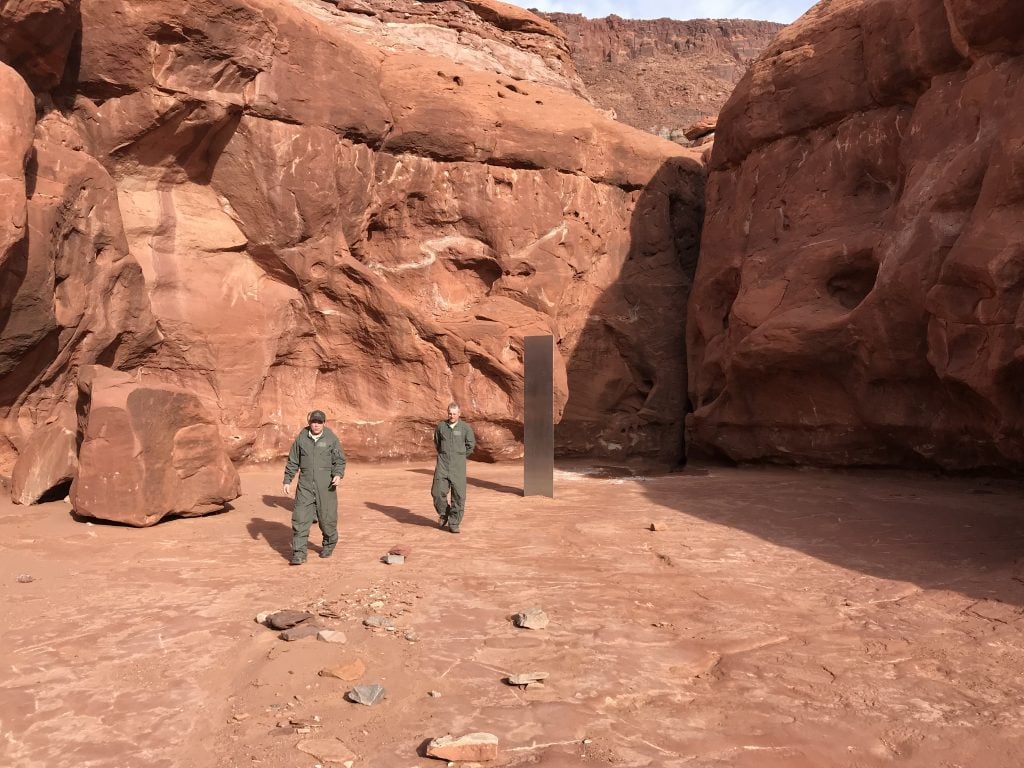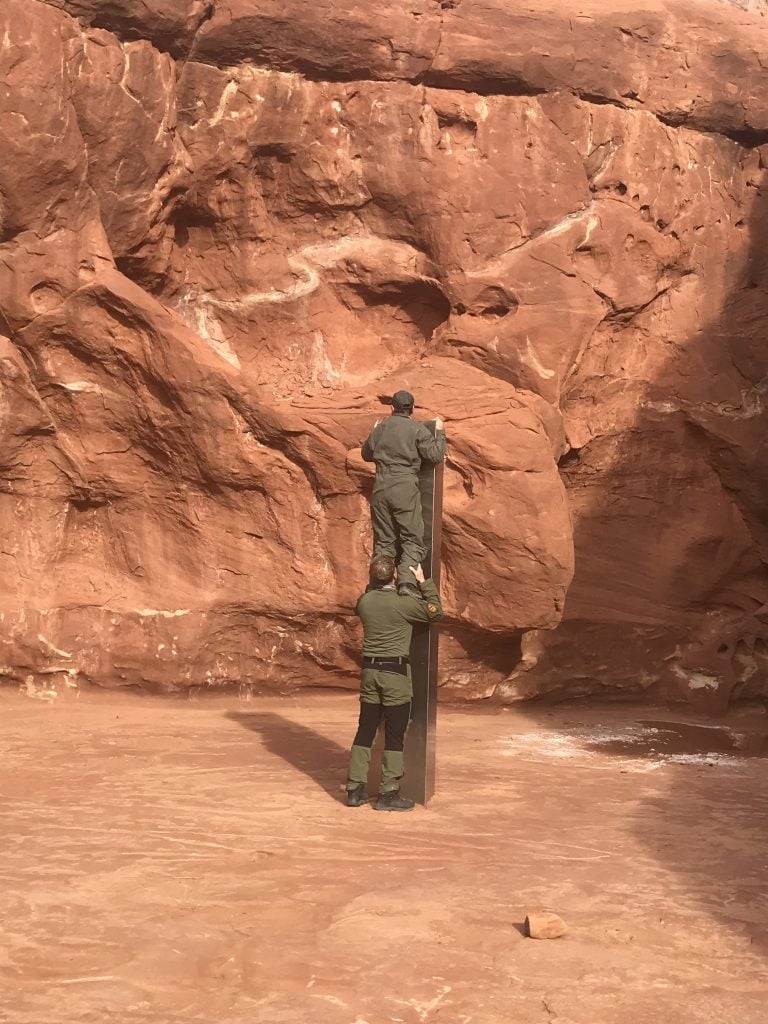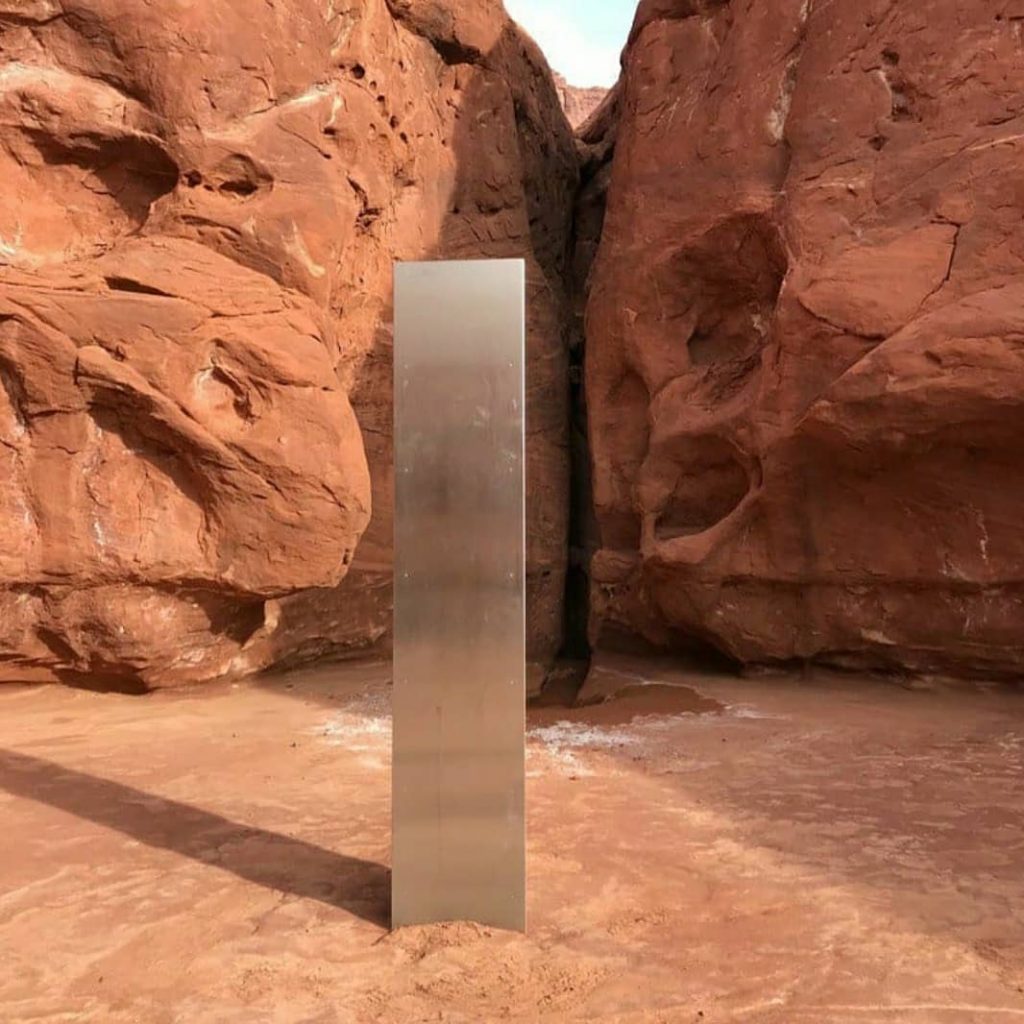Art World
A Mysterious Steel Monolith Was Discovered in the Utah Desert. Is It a Work of Art—or the Work of Aliens?
Theories about who or what is behind the object have started circulating online.

Theories about who or what is behind the object have started circulating online.

A mysterious steel monolith has been discovered deep in the red rock canyons of southern Utah. And no one seems to know who—or what—is behind it.
Officers from the Utah Department of Public Safety (DPS) eyed the object from a helicopter last week while counting bighorn sheep in the area. The spotters were quick to posit two theories about the polished steel block: it’s either a work of art, or the work of aliens.
“I’m assuming it’s some new-wave artist or something or, you know, somebody that was a big ‘2001: A Space Odyssey’ fan,” Bret Hutchings, the helicopter pilot, told the Utah news outlet KSL 5 News.
The @UtahDPS helicopter was assisting the @UtahDWR in counting bighorn sheep in remote southern Utah Wednesday when the crew encountered something entirely 'out of this world'…@KSL5TV #KSLTV #Utah
Photojournalist: @Photog_Steve5 pic.twitter.com/f8P0fayDIS
— Andrew Adams (@AndrewAdamsKSL) November 21, 2020
Indeed, the object has been compared to both the monolith from Arthur C. Clarke’s 1968 science-fiction novel (on which Stanley Kubrick’s film of the same year is based) and the mid-century minimalist sculptures of artist John McCracken.
Hutchings estimates the monolith to be 10 to 12 feet tall. A photo showing two men, one standing on the shoulders of the other like children in a trenchcoat, was provided by the DPS for scale.

Courtesy of the Utah Department of Public Safety.
DPS did not release details about its location for fear that potential pilgrims could get lost trying to locate it, but some sleuths on Reddit may have cracked the case. They suggested that the object has only been installed since 2015, which would effectively rule out McCracken, who died in 2011.
Still, some credible theories about who’s responsible for the object—at least more credible than a “new-wave artist” or ALF—have started making the rounds online.
One popular theory is that it’s the work of Petecia Le Fawnhawk, a New Mexico-based artist who used to live and work in Utah and installs totemic sculptures in desert landscapes. When reached by Artnet News, Le Fawnhawk said she “did have the thought to plant secret monuments in the desert,” but “cannot claim this one.”
“My first thought and hope was maybe it was a long lost piece by Richard Serra or Ellsworth Kelly, or perhaps the tombstone of Edward Abbey,” the artist added.

The steel monolith discovered in souther Utah. Courtesy of the Utah Department of Public Safety.
Others have speculated that it may be by Max Siendentopf, a German-Namibian artist who once left a solar-powered MP3 player playing the song “Africa” by Toto on repeat in an undisclosed location in the Namib Desert. Siendentopf did not immediately respond to Artnet News’s request for comment.
The Bureau of Land Management, a federal agency, will be looking into the object to determine if a more in-depth investigation is needed.
For its part, DPS left us with a reminder about art on public property: “It is illegal to install structures or art without authorization on federally managed public lands, no matter what planet you’re from.”